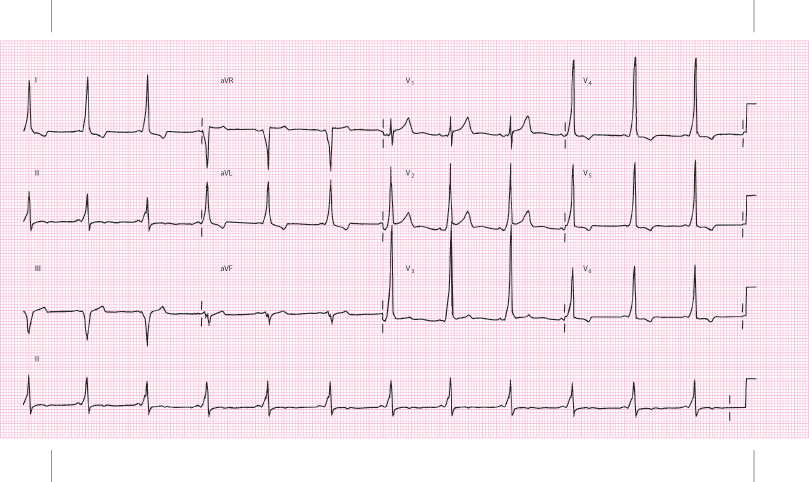Cause:Aberrant conduction pathways around the AV node; sometimes are inherited as autosomal dominant single amino acid substitution in a protein kinase gene on chromosome 7 (Nejm 2001;344:1823), and sometimes are developmental (Nejm 1987;317:65)
Pathophys:Circus movements set up between the atria and ventricle via the aberrant pathway antegrade and/or retrograde causing the recurrent tachycardias
Sx:Recurrent tachycardias, feel like "butterflies" in the chest. Often precipitated by alcohol, coffee, smoking, and other stimulants
Si:When asx, none; when in PAT, pulse = 180; or less commonly in Afib, pulse is irregular and fast
(Ann IM 1992;116:456)
Recurrent tachycardias over years in 1/2 found in asx phase; rarely limiting or fatal, 0/20 deaths in Manitoba heart study; disappears over several years in many cases
Lab:
Noninv:EKG has a short PR interval (<0.12 sec, usually <0.10) with delta wave; type A, most common, has large R in V1 from an accessory pathway in left lateral atrium (Am J Cardiol 1987;59:1093) (see Fig 2.3)
r/oLOWN-GANONG-LEVINE SYNDROME, similar but no delta wave, ie, no antegrade conduction; Fabry's disease (Nejm 1973;289:357)
Figure 2.3 WPW EKG

Reproduced with permission from Garcia T, Holtz N. The 12 Lead EKG, The Art of Interpretation. Sudbury, MA: Jones & Bartlett, 2001, p124
Rx:of PSVT (Supraventricular Tachycardias (PAT, AV Nodal Reentrant and AV Reentrant Tachycardias, Atrial Flutter, Atrial Fibrillation); avoid most antiarrythmics with exception of amiodarone
Cath lab ablation of accessory pathway if sx, 93% effective contrasts w 33% cure on medical rx (Nejm 2003;349:1803)
